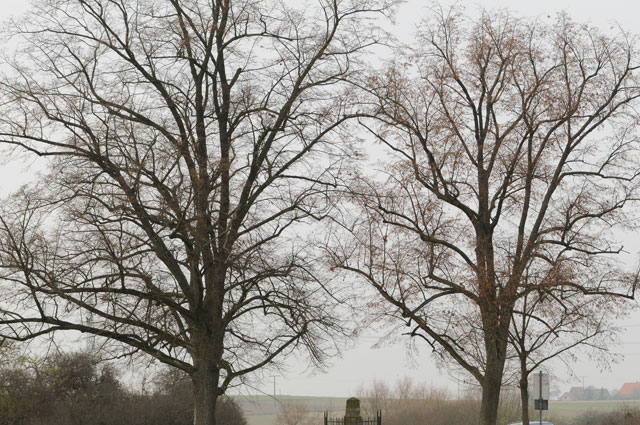Nikon Micro 105mm f2.8G VR review
-
-
Written by Thomas
Samples
The following images were taken with the AF-S VR Micro-Nikkor 105mm f/2.8G IF-ED. Each image was recorded in RAW and converted with Capture NX 2 at standard settings. Some images have White Balance set to a standard daylight value to make them comparable. No extra sharpening, tone, color, or saturation adjustments were applied.
The first shots show the performance near to infinity on a D300. This is important for all landscape shooters. The three 100%-crops are taken from the middle of the f2.8, f4.0, and f5.6 version of each image while the main image shows the shot at f8.0. You can click on each image to access the large original. These files are for personal evaluation only and cannot be used in another publication or website without permission.
| Trees: infinity shot with Nikon AF-S VR Micro-Nikkor 105mm f/2.8G IF-ED on a D300 | ||||
| f8.0, 200 ISO | ||||
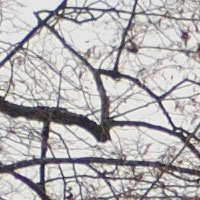 | 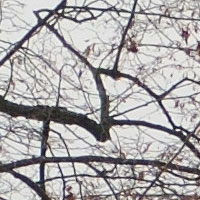 | 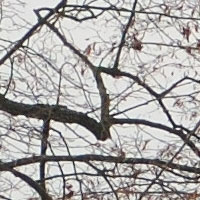 | ||
f2.8, 200 ISO | f4.0, 200 ISO | f5.6, 200 ISO | ||
The next row shows 100%-crops from the right border.
| Trees: border performance with Nikon AF-S VR Micro-Nikkor 105mm f/2.8G IF-EDon a D300 | ||||
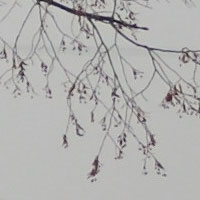 |  |  | ||
f2.8, 200 ISO | f4.0, 200 ISO | f5.6, 200 ISO | ||
These images show that the lens delivers good sharpness and contrast with little light fall-off over the DX-image circle at f2.8. From f4.0 on the performance is very good.
The next shot should give you an impression of the close-up performance that this lens can deliver. Magnification is around 1:2.5 and I’ve chosen f8.0 here to get a decent depth-of-field. Clicking on the image gives you access to the large original. The three small crops below are displayed at 100%. When you compare these crops to the same shots from my other Micro-Nikkor reviews, please allow for small focus variations. This real-life test confirms what we’ve already seen from the test-charts: This lens is a good performer under close-up conditions. And the long focal length makes for a very good isolation of the figure from the background.
| Wizard: close-up shot with Nikon AF-S VR Micro-Nikkor 105mm f/2.8G IF-ED on a D300 | ||||
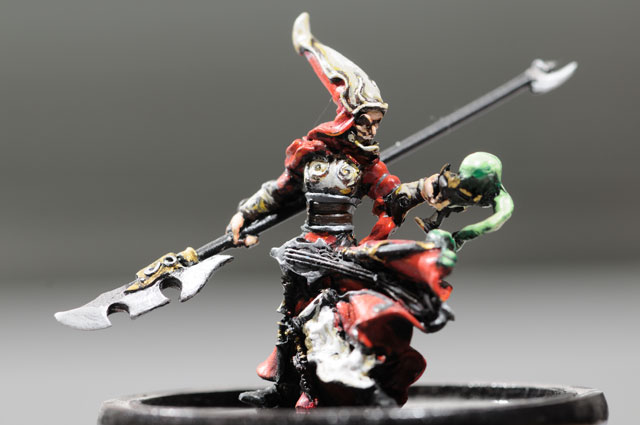 | ||||
| f8.0, 200 ISO | ||||
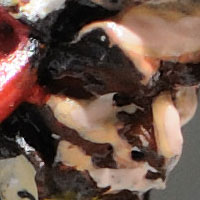 | 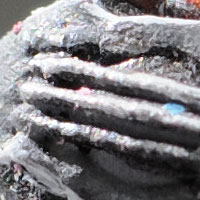 | 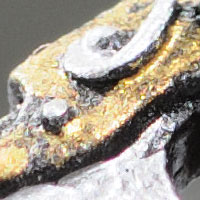 | ||
f8.0, 200 ISO | f8.0, 200 ISO | f8.0, 200 ISO | ||
Focus and build quality
Focus accuracy and repeatability is critical for people relying on AF. Repeatability (=accuracy of focus on the same subject after repeated focus-acquisition) is very good with only one small outlier over a series of 18 shots. The slight focus-variations that you can observe are dependent on the direction the focus was coming from (infinity or minimum focus distance). The 105/2.8G focuses fast: around 0.7 sec from minimum focus distance (MFD) to infinity. But under some conditions it tends to hunt in the wrong direction (namely close-up) first. Fortunately there is a focus limiter switch that prevents the lens from hunting closer than 50cm before recognizing that the target is further away. So you don’t lose too much valuable time in acquiring focus.
The focus ring of the 105/2.8G turns about 170° from infinity to MFD. This long throw is good for manual focusing (in live-view) and there is no play between the focus-ring and the focus-action. The AF-operation is very quiet and the focus-ring operates very smoothly. This all supports the general impression of professional build quality that this lens conveys: very solid construction with a metal lens-mount, nine rounded aperture blades, and a tightly fitting lens-shade. If you shake the lens there is some noise to be heard, but that is normal with a stabilized lens.
Two things happen when you focus towards MFD: The effective max aperture shrinks to f4.8 (f3.5 at a magnification of 1:2), and the smallest aperture goes from f32 to f64. But the physical length of this lens does not change. The shrinking of the effective aperture is nothing to lament about, with a non-IF design those values would be f5.6 resp. f64 at 1:1 magnification.
Image stabilization
It’s always good to see Nikon’s VR (vibration reduction) in a lens. This is a clever way to reduce shake when shooting handheld (that is unless Nikon builds a DSLR with sensor-based image-stabilization). Nikon has proven time and again that their VR is quite effective although as a pixel-peeper I would not necessarily rely on more than a two-stop reduction in shutter-speed. And I was not surprised to find the VR work as advertised at normal distances.
But the real question is: what can VR do for you when shooting up-close. There is some debate whether image-stabilization still is effective when you approach 1:1 magnification. Nikon indicated on its website that the four-stops advantage is valid for “near infinity to 3m (1/30x reproduction ratio) shooting”. Btw. that’s something they don’t indicate for their second stabilized macro-lens, the AF-S DX Micro-Nikkor 85mm f/3.5G ED VR, or any other stabilized lens in their line-up. So that was something I wanted to find out.
I did two series of shots at around 1:2 magnification: one with VR=ON and one with VR=OFF. I also had other test shots with the 85/3.5G and the 40/2.8G to see how those compared. I was standing a little stooped in front of the target which is not the ideal position for slow shutter-speeds and took 15 shots each in intervals of around one second. After downloading the images to my computer I looked through the series at increasing magnification and awarded additional stars for those shots that still looked sharp at the respective magnification. So I ended up with a statistic of how many shots with the 105/2.8G with VR=ON were zero stars, one star, two stars, etc. and could compare these results across the different series. As this was quite a chore I tested only at a speed of 1/15 sec. This is a pretty slow speed and is far beyond the recommended formula of using 1/focal length as shutter-speed for sharp hand-held images. If the image-stabilization can hold a two stops longer shutter-speed that would mean around 1/25 sec for the 105mm lens.
When looking at my statistics I found out:
1. With VR=OFF the 105mm lens produces results that were slightly better than the 85/3.5 (with VR=OFF). A probable explanation could be the heavier weight and the better grip on the longer 105mm lens. But still the results were worse than from the (non-stabilized) 40mm macro-lens.
2. With VR=ON the 105mm was scoring about 2x better than with VR=OFF which is a little better than the 85/3.5 with VR=ON and more than 50% better than the 40mm.
This again proves that VR is clearly beneficial for macro-shots: The VR makes the 2.6x longer 105mm lens produce sharper results than its 40mm cousin. That looks like an almost two-stop advantage of VR to me. A word of warning though: even with VR=ON only half of the shots were sharp enough at 1/15 sec. So you better get a tripod or use speeds of 1/30 sec or 1/60 sec to avoid blurring a macro-shot!
All-in-all the AF-S VR Micro-Nikkor 105mm f/2.8G IF-ED delivers a very good performance, so let’s wrap things up in my Nikon 105mm macro lens verdict.
